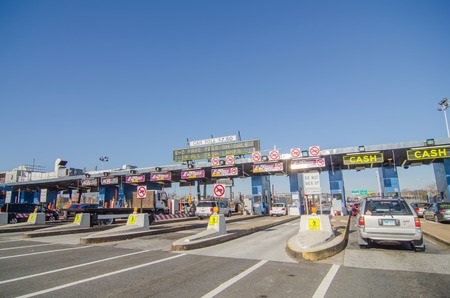Investing in Toll Roads – Make Money from Traffic

Highways are Expensive
Highways are extremely expensive to build (and maintain). Planning, land acquisition, grading, paving, and other costs can cost from $2 to $10 million per mile depending on the number of lanes and whether the highway is in a rural or urban area.
As an alternative to fronting all the money themselves, state governments (and federal governments in some other countries) are turning to partnerships with private investors that pay to construct the highway.
They get paid back either through direct payments from the government over time, or more commonly, by placing toll booths on the roads and having the drivers pay. Some times there is even a combination of this where the investors get paid the toll, but if it falls short of projections, the government (i.e. taxpayers) might make up the difference.
Investing in Toll Roads Through Toll Road Stocks
There are a couple of ways to invest in toll roads. For most of us, we can’t write a check big enough to make a difference in financing a highway.
Those wanting to own a toll road can own shares of a company that invests in them. A couple of the big names include: Brookfield Infrastructure Partners (NYSE: BIP) and Macquarie Infrastructure Corp (NYSE: MIC). Both Brookfield and Macquarie invest in several other businesses in addition to toll roads so it is not a direct play on toll roads; however, the businesses they are involved with are somewhat related income-producing utility-type investments.
BIP owns energy and freight shipping and storage facilities, railroad tracks in Australia, natural gas storage, cell phone towers, and fiber backbone among other investments.
MIC owns Hawaii Gas, 12 marine terminals, 8 solar and wind power plants, and provides aviation services at about 70 airports.
At the time of this writing, BIP yields over 4.5% and MIC yields over 6%.
Since this type of investment is bigger in Europe, some foreign companies with a lot of exposure to toll roads include Spanish-company Cintra, a subsidiary of Ferrovial (BME: FER).
Cintra actually owns quite a few American toll roads including the Chicago Skyway, Indiana East-West Toll Road, and partial ownership of the North Tarrant Express (in each case, they don’t own the land itself but the right to toll the road for some period of time).
Direct Investment Available for Wealthy Investors
If someone is very wealthy, there are definitely opportunities to invest in private partnerships that partner with a local state or federal government on one particular toll road.
WSJ reports that the Presidio Parkway between the City of San Francisco and the Golden Gate Bridge is one example.
A large financial institution like Citigroup or JP Morgan Chase will put together a private partnership to be one of the major investors in this type of project; however, they will likely require wealthy individuals or family offices to put in $10 million or more in order to participate.
Federal governments in countries such as France, Spain, Australia, and even South Africa and Mozambique have turned to public-private partnerships in order to develop and maintain toll roads. Obviously operating in another country, especially one with a less developed or less favorable legal system, adds a layer of complexity to this type of investment.
Investing in Toll Roads is Not Risk-Free
A partnership of Cintra and a Texas company to own a toll road on a 41 mile stretch of Texas State Highway 130 went bankrupt after only 3 years and was forced to hand control of the toll road to lenders in August 2016.
If you look on an aerial map, the toll road between Mustang Ridge and Seguin helps you avoid the traffic between Buda and New Braunfels (between Austin and San Antonio), but frankly that isn’t that bad of a stretch of traffic.
The traffic is way worse in Austin and in San Antonio flows pretty well once you get to Buda. Also, you have to go out of your way to get on SH 130.
Toll roads still need to make business sense and that particular toll road was doomed to fail, no matter how it was structured (it was structured terribly by the way, with the federal government putting up much more money than the toll road operator and losing a lot of money after lenders took control of the tollway).